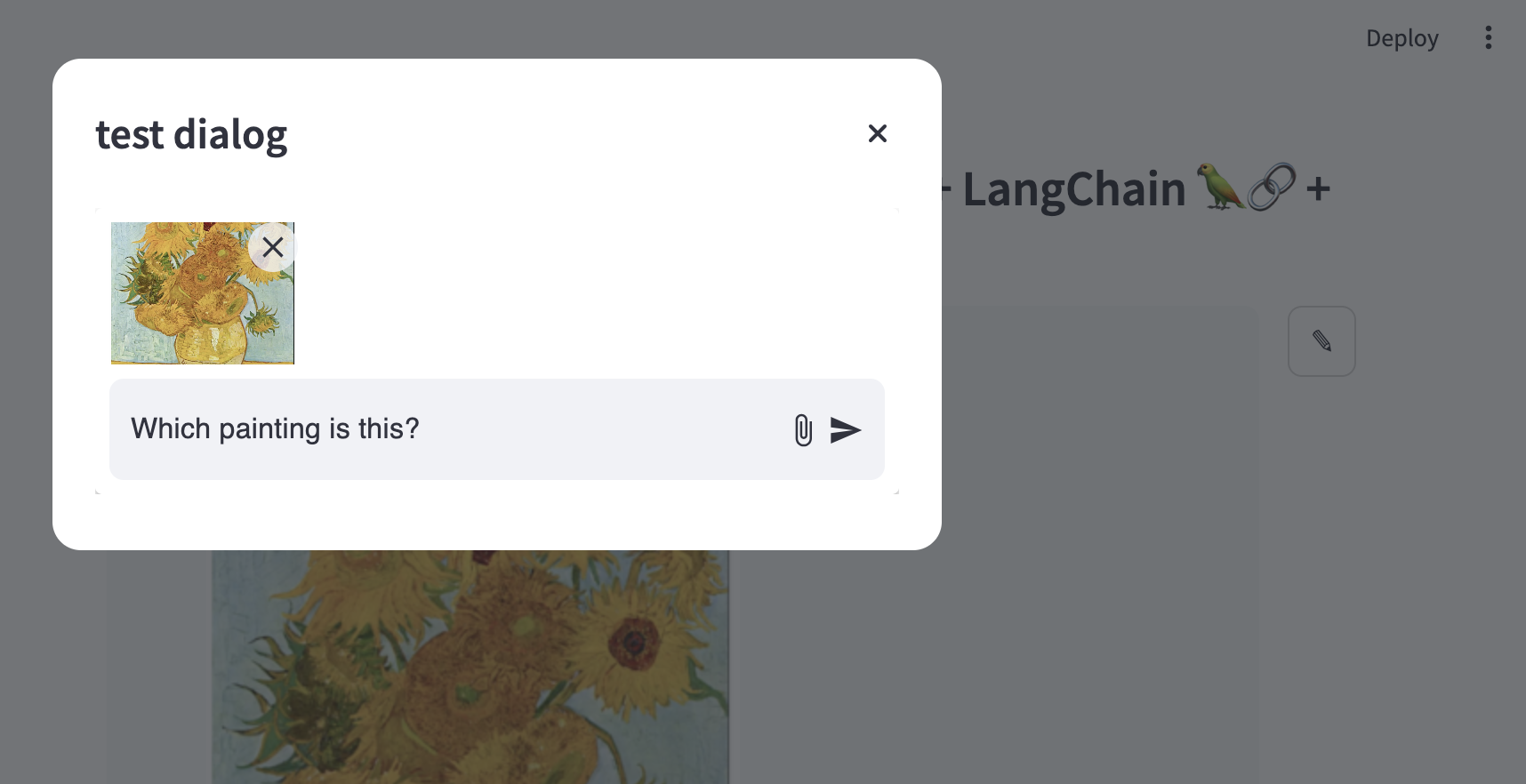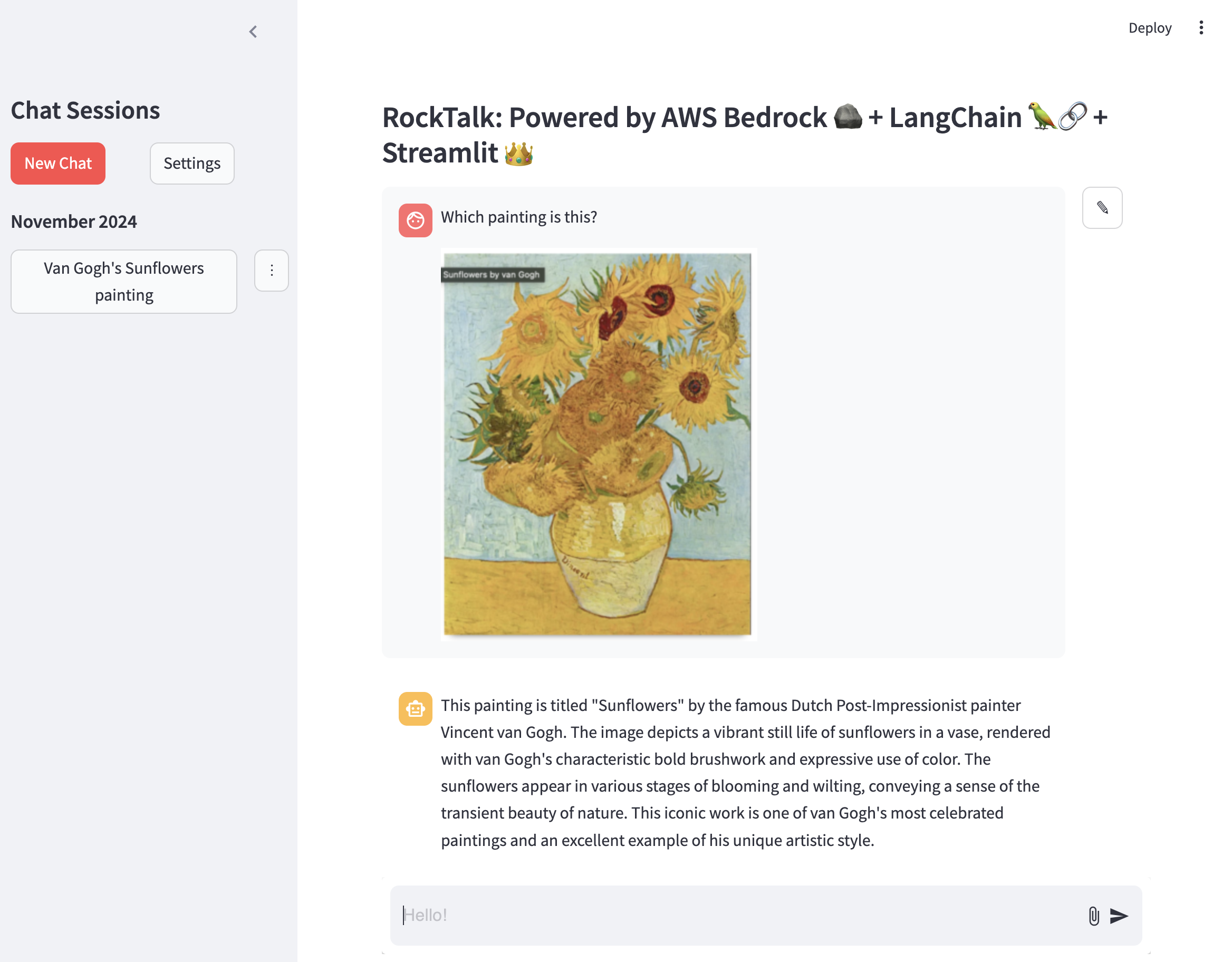A Streamlit component that provides a modern chat-style prompt with image attachment and paste support. This component was built to mimic the style of streamlit.chat_input while expanding functionality with images. Future work may include addition of speech-to-text input.
Author: Tyler House (@tahouse)
- 📝 Chat-style text input with multi-line support
- 📎 Image attachment support via button or drag-and-drop
- 📋 Paste image support (paste images directly from clipboard)
- 🖼️ Image preview with ability to remove attached images
- ⌨️ Submit with Enter key (Shift+Enter for new line)
- 🎨 Automatic theme integration with Streamlit
- 📱 Responsive design that works well on mobile and desktop
- 🗜️ Automatic image compression/scaling to stay under size limits (customizable, default 5MB)
- 📌 Optional pinned-to-bottom placement for main chat interface (one per app)
- 🔄 Flexible positioning for use in dialogs, sidebars, or anywhere in the app flow
- ✏️ Support for default/editable content - perfect for message editing workflows
- 🔤 Smart focus management - automatically returns to text input after interactions
pip install streamlit-chat-promptimport streamlit as st
from streamlit_chat_prompt import prompt
# Create a chat prompt
response = prompt(
name="chat", # Unique name for the prompt
key="chat", # Unique key for the component instance
placeholder="Hi there! What should we talk about?", # Optional placeholder text
main_bottom=True, # Pin prompt to bottom of main area
max_image_size=5 * 1024 * 1024, # Maximum image size (5MB default)
disabled=False, # Optionally disable the prompt
)
# Handle the response
if response:
if response.text:
st.write(f"Message: {response.text}")
if response.images:
for i, img in enumerate(response.images):
st.write(f"Image {i+1}: {img.type} ({img.format})")Here are some usage patterns, or check out rocktalk for a full working example.
-
import base64 from io import BytesIO import streamlit as st from streamlit_chat_prompt import PromptReturn, prompt, ImageData from PIL import Image st.chat_message("assistant").write("Hi there! What should we chat about?") prompt_return: PromptReturn | None = prompt( name="foo", key="chat_prompt", placeholder="Hi there! What should we chat about?", main_bottom=True, ) if prompt_return: with st.chat_message("user"): st.write(prompt_return.text) if prompt_return.images: for image in prompt_return.images: st.divider() image_data: bytes = base64.b64decode(image.data) st.markdown("Using `st.image`") st.image(Image.open(BytesIO(image_data))) # or use markdown st.divider() st.markdown("Using `st.markdown`") st.markdown(f"")
-
Dialog Usage and Starting From Existing Message

if st.button( "Dialog Prompt with Default Value", key=f"dialog_prompt_with_default_button" ): with open("example_images/vangogh.png", "rb") as f: image_data = f.read() image = Image.open(BytesIO(image_data)) base64_image = base64.b64encode(image_data).decode("utf-8") test_dg( default_input=PromptReturn( text="This is a test message with an image", images=[ ImageData(data=base64_image, type="image/png", format="base64") ], ), key="dialog_with_default", )
Main function to create a chat prompt.
Parameters:
name(str): Unique name for this prompt instancekey(str): Unique key for the component instanceplaceholder(str, optional): Placeholder text shown in input fielddefault(Union[str, PromptReturn], optional): Default value for the prompt. Can include text and images using thePromptReturnobject type.main_bottom(bool, optional): Pin prompt to bottom of main area (default: True)max_image_size(int, optional): Maximum image size in bytes (default: 5MB)disabled(bool, optional): Disable the prompt (default: False)
Returns:
Optional[PromptReturn]: Object containing message and images if submitted, None otherwise
Object returned when user submits the prompt.
Properties:
text(Optional[str]): Text message entered by userimages(Optional[List[ImageData]]): List of attached images
Object representing an attached image.
Properties:
type(str): Image MIME type (e.g. "image/jpeg")format(str): Image format (e.g. "base64")data(str): Image data as base64 string
This repository is based on the Streamlit Component template system. If you want to modify or develop the component:
-
Clone the repository
-
Install development dependencies:
pip install -e ".[devel]" -
Start the frontend development server:
cd streamlit_chat_prompt/frontend npm install npm run start -
In a separate terminal, run your Streamlit app:
streamlit run your_app.py
This project is licensed under the Apache License 2.0 - see the LICENSE file for details.




